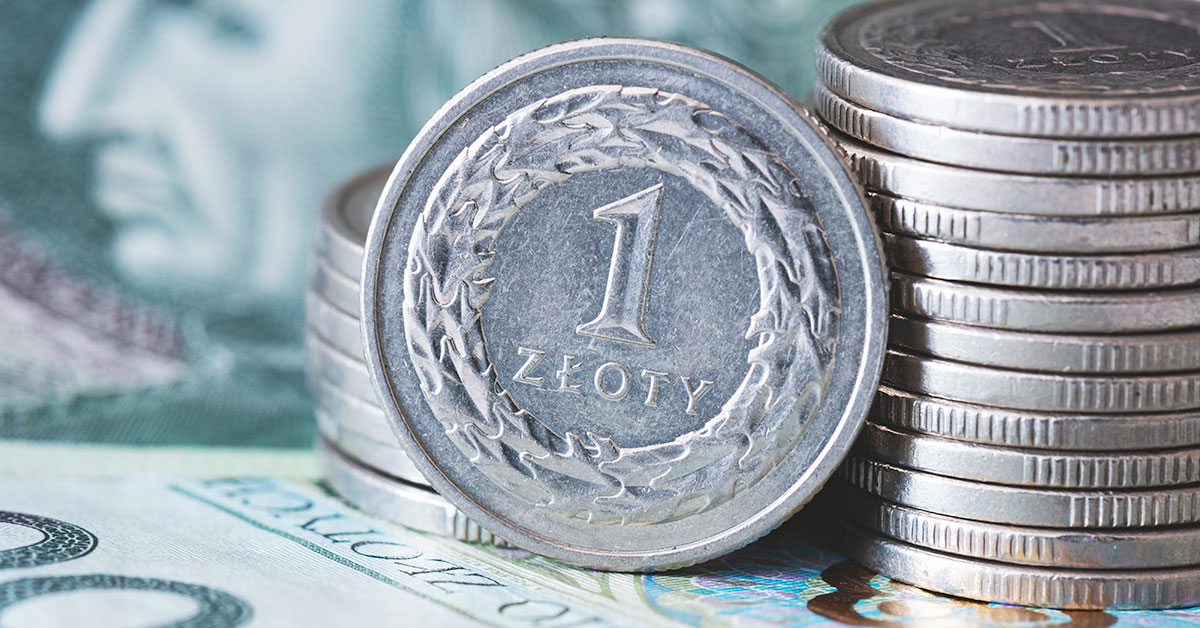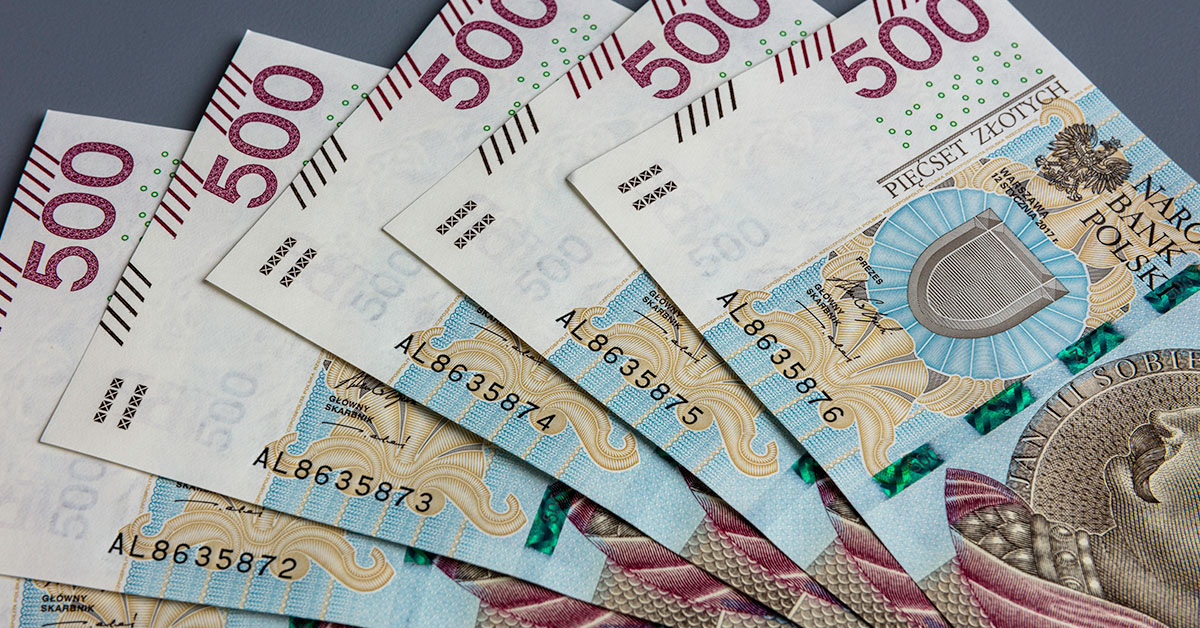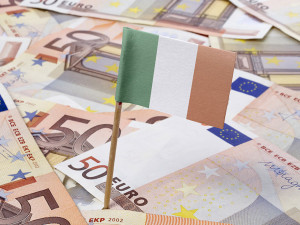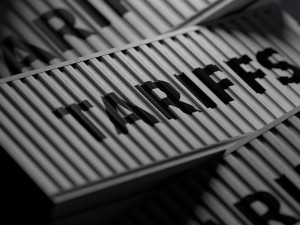
The Polish złoty (PLN) is the currency of Poland. It has been in its current denomination since 1995 after its fourth denomination.
Poland has been a member of the European Union since 1 May 2004, but still uses the złoty and not the euro. Today, the złoty is the most traded currency in central and eastern Europe.
The złoty has a rich history which reflects the rich and often turbulent history of Poland, which has undergone many economic changes, particularly in the 20th century. Here is a comprehensive overview of Poland’s currency.
Origins of the złoty
The term ‘złoty’ means ‘golden’ in Polish, and first appeared in Poland in the late 15th century. Initially, this referred to any gold coin which was used in trade, regardless of whether it originated from Poland or not.
Often the coins would originate from Italy and Bohemia (now modern-day Czech Republic). As trade began to flourish, like many countries, there was a need to standardise the currency and introduce regulations.
By the 16th century, the złoty began to emerge as a specific denomination, and in 1564, King Sigismund II Augustus initiated a major monetary reform which established a fixed denomination of the coin.
The złoty would now be a silver coin equivalent to 30 groszy – a groszy at the time being one of the various coins in circulation throughout Europe.

Decline of the first złoty
The Swedish invasion known as the “Deluge” (1655-1660) and subsequent wars with Russia, the Ottoman Empire, and other neighbours strained the economy and marked a decline of Poland from its golden age.
The 17th and 18th centuries were tumultuous for Poland, characterised by wars, political upheaval, and eventual partition in 1795. These partitions were between the Habsburg Monarchy, Prussia and Russia.
The złoty remained in circulation after the partition, but was diluted by several other denominations and currencies being introduced. Poland’s autonomy and economy was damaged by being under partition. In 1807, Napoleon’s Duchy of Warsaw issued coins denominated in grosz, złoty and talars, but following the defeat of Napoleon, the German sectors restored their own currencies, while the Russian and Austrian sectors kept the złoty.
Several other currencies made an appearance from this point:
- In 1830, during the November Uprising, the insurrectionists issued their own “rebel money” which was in use briefly.
- In 1892, the Austro-Hungarian krone was introduced.
- In 1835, the Free City of Kraków also used its own independent currency, the Kraków złoty.
Following the outbreak of the First World War, the Polish marka was introduced following the Great Retreat of Russia in 1915. Poland gained independence in 1918, but the marka proved to be unstable, and caused a period of galloping inflation and economic decline.
Introduction of the second złoty
After regaining independence, and the introduction of the disastrous Polish marka, it was decided in 1924 to reintroduce the złoty. The second złoty replaced the marka at 1:1,800,000.
The second złoty’s tenure was short-lived and after the invasion by German and Russian forces, the złoty was replaced by the Reichsmark and the ruble in areas annexed by the Soviet Union.
The third & fourth złoty
Following Poland’s administration under a communist government, a third złoty was introduced and redenominated at a rate of 1:100 for the old złoty. The shift in government and administration led to various monetary reforms and inflation. In 1989 during the fall of communism, hyperinflation struck and another currency was required.
On the 1st of January 1995, the third złoty (PLZ) was exchanged for the new and fourth złoty (PLN) to counter the inflation. This is the currency Poland uses today.

The złoty today
Today the Polish economy remains solid, and from 1995 onwards the Polish showed positive results in economic growth. From 1989 to 2018, a period of just under 30 years, Poland’s GDP increased by 826.96% – the highest growth in Europe.
Joining the European Union
In May 2004, Poland joined the European Union, which increased economic integration with Western Europe and saw Poland reach a consistent 4-5% CAGR annually. EU funds, increased trade, privatising markets, and foreign investment helped to steer this boost, and reinforce trust in the złoty, which increased its popularity with traders.
A condition for joining the EU is that a country must eventually adopt the euro and join the Eurozone, although there is no specific date set, and a country must meet the necessary criteria. Preference for the złoty has been strong but recent opinion polls have shown that up to 60% of Polish citizens are in favour of adopting the euro.
2008 financial crisis
Poland managed to narrowly avoid a recession during the global financial crisis of 2008-2009, a rare feat for an EU country as most suffered harsh recessions. Growth slowed significantly, but inflation remained low. The złoty appreciated against major currencies, reflecting strong economic fundamentals and reinforcing confidence in Poland’s currency.
Covid-19 pandemic
Like many currencies, the złoty experienced volatility during the Covid-19 pandemic, and depreciated against safe haven currencies such as the US dollar.
This initial depreciation was followed by a swift recovery as the initial shocks from the pandemic subsided, but small fluctuations continued as the pandemic developed.
From an inflation rate last year of 15.2%, the złoty has recovered and at the time of writing, has a healthy inflation rate of 2.7%.
Conclusion
The złoty has been a key cultural icon for Poland since the 15th century, and despite the currency being replaced by foreign powers and being redenominated four times, it remains the currency of Poland today.
Poland’s decision to join the EU has been greatly beneficial for the economy, and support for the euro has increased. However, the złoty remains an important part of Poland beyond simply an economic tool.
For more articles on currency and economics, make sure to stay posted on our weekly articles at CurrencyTransfer in our Expert Analysis section. We also post daily updates on the market with our Market Commentary.
Sign up for an account with CurrencyTransfer today for free, and you’ll be assigned an account manager who will help you every step of the way.
Caleb Hinton
Caleb is a writer specialising in financial copy. He has a background in copywriting, banking, digital wallets, and SEO – and enjoys writing in his spare time too, as well as language learning, chess and investing.



